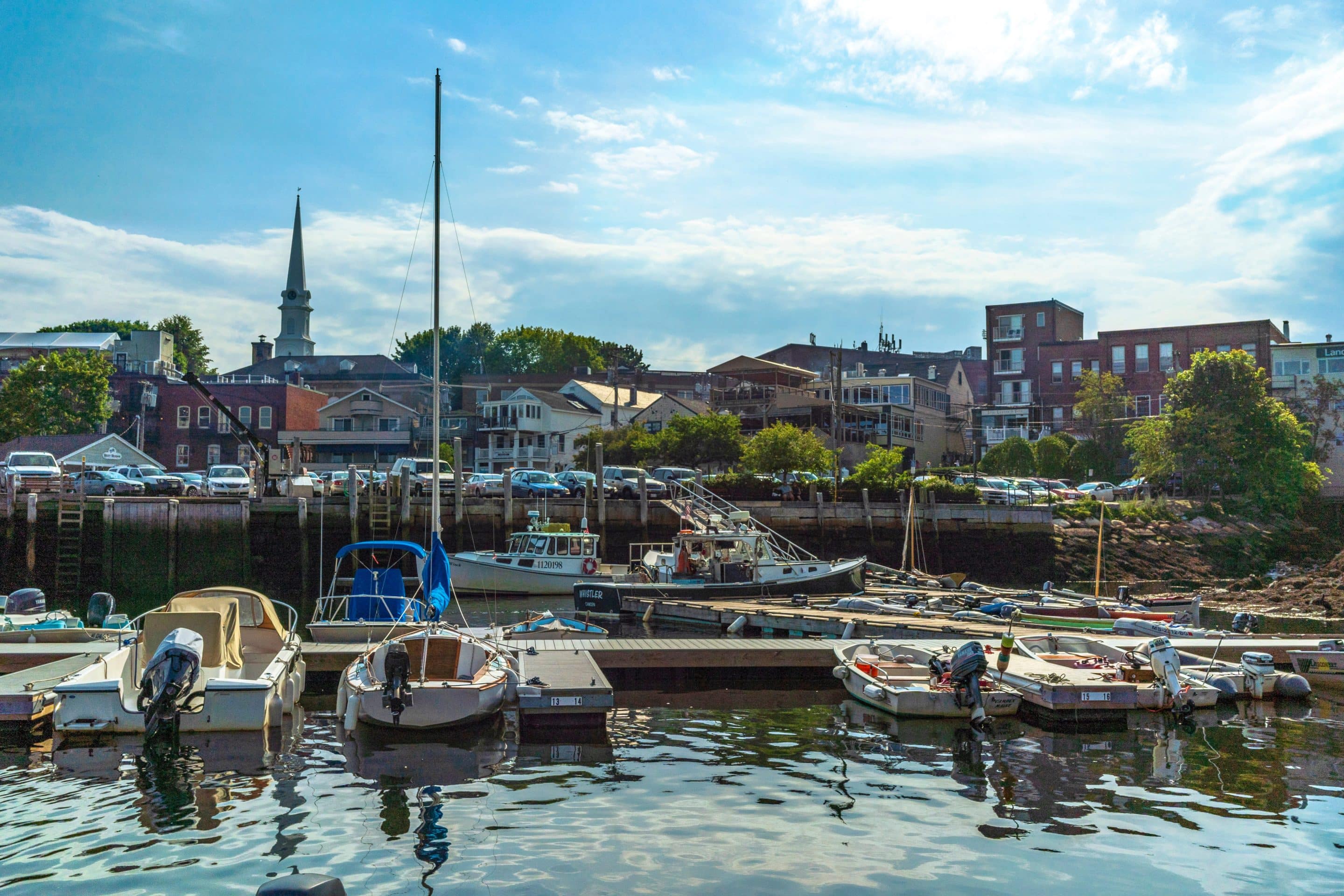This article is republished from Energy New Network under a Creative Commons license.
Maine is making the fastest strides among New England states in preparing for climate change, according to a new analysis.
The report is the work of two fellows at the University of New Hampshire Sustainability Institute who took on a project proposed by the Union of Concerned Scientists. That organization wanted to evaluate the region’s climate progress using its own framework for measuring what it calls the “resilience gap,” or the extent to which communities remain unprepared for climate-change-driven conditions.
“I wanted to take that framework out into the field, road test it if you will,” said Roger W. Stephenson, the Union’s Northeast regional advocacy director, who acted as mentor on the study.
The researchers, Miriam Israel and Jo Field, collected information about each state’s progress toward meeting the goals laid out in their respective climate action plans, based on interviews with subject matter experts and their own research.
One theme that emerged across the region as a whole was a failure to include the viewpoints of residents in the most vulnerable and burdened communities in climate change decisions, and to ensure an equitable sharing of resources. While more states are developing policies to include those goals, implementation has lagged, researchers said.
In addition, “there is an overall lack of capacity and resources” to fulfill the recommendations outlined in states’ climate action plans, they concluded. And arguments that climate mitigation is too costly are too often not weighed against the projected costs of inaction and “the pitfalls of a business-as-usual approach.”
At the state level, the report noted that even though Maine only began to prioritize action on climate change after the election of Gov. Janet Mills in 2019, it has since demonstrated “a serious commitment … backed by political will at the state level and a progressive vision for climate resilience at the community and state level.” The state is ahead of schedule in reaching its goal of net-zero carbon emissions by 2045, according to a recent state report.
In contrast, New Hampshire has had a climate action plan since 2009, but it “remains largely unused” due to a lack of state leadership and will, the researchers said. It is the only New England state that hasn’t adopted legislation to transition away from fossil fuels, leaving municipalities and regional planning commissions to take the lead on mitigation and adaptation on their own.
“It’s a hardscrabble at the local level,” said Stephenson, who lives in New Hampshire. “The regional planning commissions are incredibly important in offering support for these communities.”
Joshua Elliott, director of the division of policy and programs at the state Department of Energy, and one of the interview subjects, did not respond to requests for comment.
Connecticut’s progress toward meeting its climate goals has lagged, and the state is not on track to meet its emission reduction goals, the report said. They cited a lack of accountability and enforceability of the emissions obligations set by the state’s Global Warming Solutions Act as one reason why.
On the adaptation front, the state has prioritized protecting coastal resources at risk from sea-level rise, but it has given short shrift to other resources or areas that are also prized by residents, the report said.
John Truscinski, director of resilience planning at the Connecticut Institute for Resilience and Climate Adaptation, said that dynamic is more of a function of Connecticut being a home rule state. Decisions about what to protect are made at the municipal level, he said, and most of that planning took place after Hurricane Sandy in 2012. Coastal towns were most affected by that storm, and so that’s where the focus has been, he said.
“In the last couple of years, we’ve had a few tropical storms that dumped a lot of rain, and we’ve had some hot summers,” Truscinski said. “Heat and stormwater are now becoming more of a priority, and that takes you into some of the urban core towns. More distressed communities are now taking an interest in this.”
Local-level decision-making about resiliency measures can create inequities in the distribution of state resources, as has occurred in Massachusetts, the report said, noting that “wealthier municipalities have been more successful at accessing funds and preparing for the impacts of climate change.”
Steve Long, director of policy and partnerships at the Massachusetts Nature Conservancy, said Massachusetts deserves credit for developing a statewide technical assistance and funding program — the Municipal Vulnerability Preparedness Program — that helps cities and towns identify their climate change risks and then apply for action grants.
But the program would indeed benefit from a more sustainable funding source and one that is applied more equitably, he said.
“I would like to see a sustainability coordinator for every municipality and funded by the state,” Long said.
Rhode Island has leaned on its Infrastructure Bank to mobilize funding for adaptation and resilience projects, “an excellent example of an existing funding mechanism that has been repurposed to be an instrument of climate action,” researchers said. However, the state lacks a comprehensive community vulnerability assessment.
They also noted that Rhode Island has demonstrated a strong commitment to public outreach and community engagement in climate policy development.
And finally, Vermont has adopted “robust” policies to address climate impacts, and a 2023 state budget that includes $216 million for climate priorities. The state has more recently taken steps to address equity concerns, including the passage of a law establishing an environmental justice advisory council and an interagency environmental justice committee.
However, researchers noted, the structure of the Vermont Climate Council “is currently not inclusive and the council’s membership does not fairly represent communities most vulnerable to projected climate impacts.”






